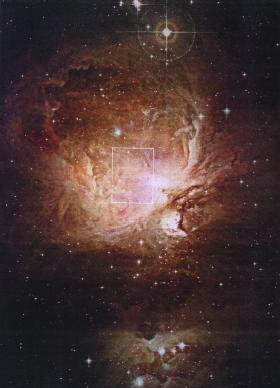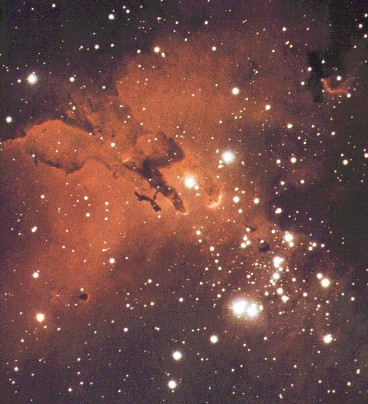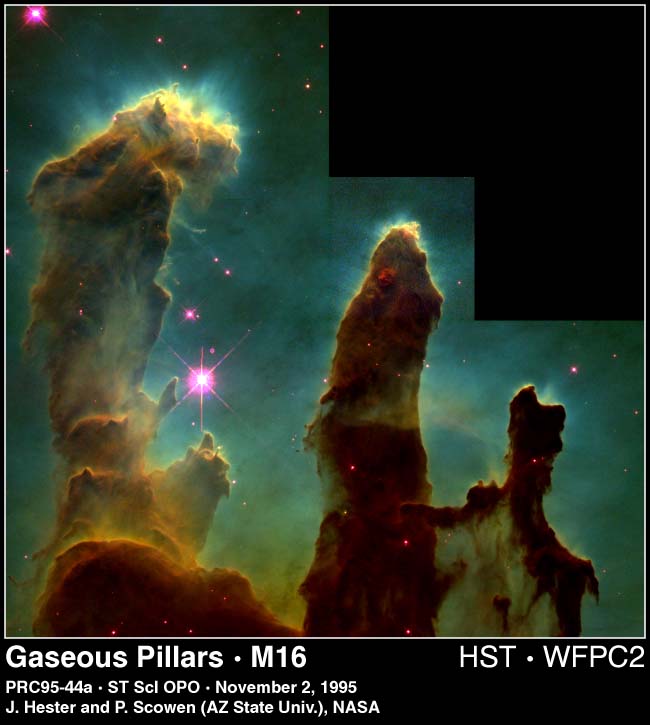|
In the programme of photon dominated regions (PDRs) the submillimeter
satellite ODIN will observe the best studied dense interface regions of
ionized HII regions, reflection nebulae, low-density UV PDRs, as well as
X-ray PDRs, in order to get a better understanding of the physical and
chemical effects of the incident radiation flux on PDRs. The ODIN
stallite will also probe which role H2O and O2 have in the overall oxygen
abundance and ion chemistry.
|
|
Orion is a key target for the submillimeter satellite ODIN.
The Orion Nebula marks the location of one of the highest concentrations
of young stars in the sky. It is the best studied star-forming region
in the sky, and continues to yield new insights as more technically
advanced telescopes equipped with new frequency ranges are focused on it.
|

|

|
The bright nebula M16 (or Eagle nebula) is located 7000 light years from
Earth (some 3 degrees away from the bright star Altair). Massive young stars
illuminate and pump out huge amounts of UV radiation, which heats the nebula
through the photoelectric effect. Three darker pillars in the center of the
nebula are concentrations of dust and gas and have been eroded by the UV
radiation. Only the densest parts of the cloud, which are well shielded from
UV through dust particles have survived. Hubble Space telescope has zoomed
on these dust pillars (see the enlargement below). The left pillar is three
light years long. The turquoise background is artificially colored in order
to better show the bright rims of the pillars.
|
|
The ODIN research team of photodominated regions will observe many bright
interaction zones between UV radiation and dense cloud material. Especially
we will search for thermal water vapor, which is an efficient coolant of
warm gas and which should be enhanced in warm photodominated regions like
the ones shown in these Figures.
|

|